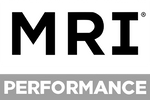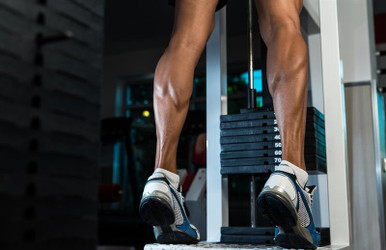Muscle Spasms: Why They Happen and How to Stop Them (Fast)
Posted by MRI Performance on 26th Oct 2025
Punch That Cramp Before It Punches You
You're midway through a heavy set, focused, fired up, and suddenly your calf locks up like it’s auditioning for a horror film. Or maybe it’s 2 AM, and your hamstring decides to violently protest your deadlift session from two days ago.
Muscle spasms, also known as involuntary contractions or cramps, aren’t just annoying. They can wreck your workout, disrupt your recovery, and signal deeper imbalances in your training or nutrition.
In this guide, we’ll break down:
- What causes muscle spasms
- How to stop them fast
- How to prevent them long-term with smarter training and strategic supplements
Let’s fix the spasm problem, not just stretch it out.
What Causes Muscle Spasms?
Contrary to popular belief, muscle spasms aren’t just a water intake issue, though hydration is part of it. Here’s what’s really going on behind those sudden cramps:
1. Dehydration
Your muscles run on a delicate balance of fluids and electrolytes like sodium and potassium. When that balance is off, your nervous system gets twitchy and your muscles misfire.
2. Fatigue and Overtraining
When muscles are pushed beyond what they’re ready for, they accumulate waste byproducts like lactic acid and run low on ATP. This fatigue increases the likelihood of spasms, especially during or after intense training.
3. Inadequate Recovery
Recovery is not just about rest days. It’s about equipping your body to repair tissue, flush toxins, and restore proper muscle function. Under-recovered muscles are more prone to spasms under stress.
4. Low Amino Acid Levels
Your muscles need specific amino acids, especially L-Glutamine, to recover, stay hydrated, and function properly. A drop in available glutamine can increase post-lift soreness and cramping.
5. Repetitive Motion or Poor Mechanics
Spasms often occur in overused or poorly activated muscle groups. Training with high volume but low variety or mobility work can increase the risk.
How to Get Rid of a Muscle Spasm Fast
You don’t need to suffer in silence. Here’s what helps, backed by experience and results:
1. Hydrate with Intent
Hydrate steadily throughout the day, not just during training. Include salt and potassium-rich foods like coconut water, bananas, and meals with sea salt.
2. Foam Roll or Massage the Area
Manual pressure helps reset the muscle by breaking up tightness and calming nerve impulses causing the spasm.
3. Use Dynamic Stretching
Do not force a locked muscle into a deep stretch. Instead, use gentle movement to reset the nervous system. Try slow hamstring kicks or calf raises.
4. Heat It Up, Then Cool It Down
Heat loosens the muscle, while a cold pack afterwards can reduce lingering inflammation or swelling.
Long-Term Prevention: Build a Cramp-Proof Recovery Plan
Fixing muscle spasms long-term means creating a supportive environment for your muscles. Prevention begins with effective recovery.
1. Prioritize Smart Training Cycles
Alternate intensity, vary movement patterns, and program deload weeks. Overuse and nervous system fatigue are major triggers.
2. Cool Down Effectively
After training, ease your body back into recovery. Gentle stretching, walking, and breathwork help return your system to a restful state.
3. Supplement for Recovery and Muscle Function
L-Glutamine
Glutamine supports muscle repair, hydration, and immune function. It helps reduce soreness and supports gut health, which aids nutrient absorption.
Key Benefit: Helps restore electrolyte balance inside muscle cells and supports fluid retention.
Omega-3
Omega-3s reduce muscle inflammation, improve nerve function, and support cellular recovery. Chronic inflammation can make muscles more prone to spasms.
Key Benefit: Helps calm inflammation and supports neuromuscular stability.
Are Muscle Spasms a Sign of Something More Serious?
Most spasms are harmless, especially if they resolve quickly. However, consult a healthcare provider if you experience:
- Frequent, severe spasms during rest
- Spasms with numbness, weakness, or tingling
- Persistent cramping despite hydration or recovery efforts
Final Word: Recovery Isn’t Optional
If muscle spasms are recurring, it is not a sign that your body is broken. It is a signal that support is missing. Start listening.
Train hard, but recover harder. Hydrate with intention, fuel your system, and use supplements that actively support your performance and muscle health.

